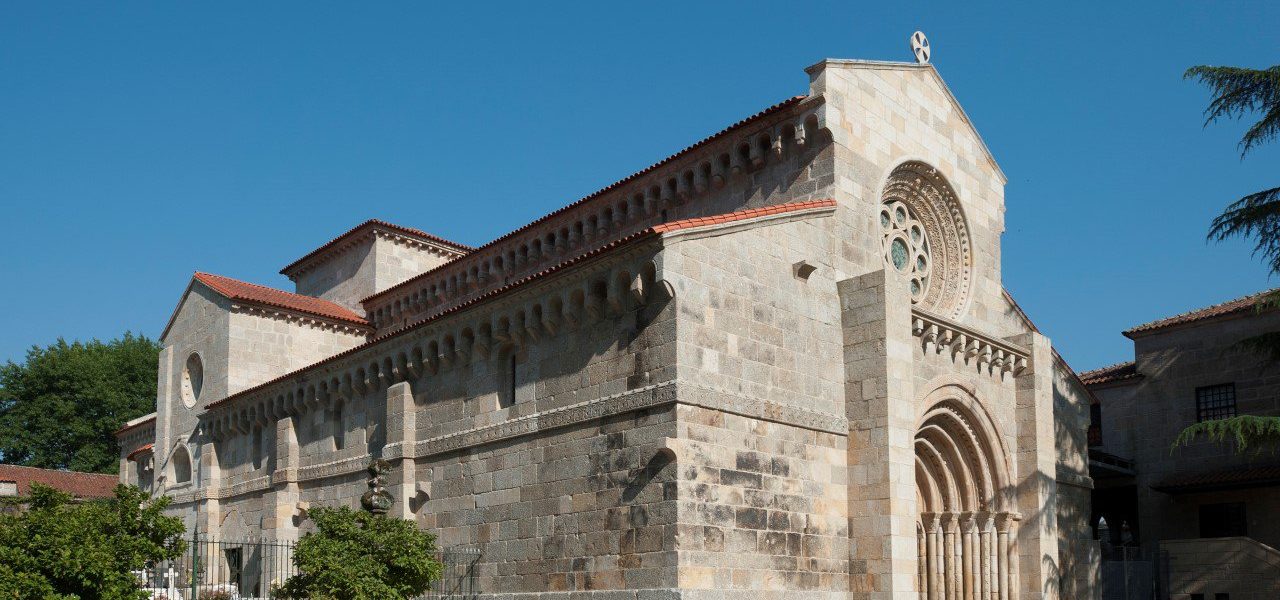INTRODUCTION
The Monastery of the Saviour of Paço de Sousa was founded in the 10th century by Trutesendo Galindes and his wife Anímia.
It was a famous monastery of the Benedictine Order and was linked to the Ribadouro family.
Paço de Sousa was the birthplace of a trend based on the pre-Romanesque tradition and influenced by Romanesque themes from the Cathedral of Porto and the city of Coimbra, giving rise to what was known as “nationalized Romanesque”.
HISTORY
The first editing on the first documented reference dates back to 994, but the construction of the Romanesque Church did not start until the 13th century.
In the 17th and 18th century the first phase of remodelling of the cloister and monastic quarters started and also included a transformation of the main chapel and the main façade. In 1910 the church had been classified as a national monument.
After restoration works in the early 1920ies, a fire partially destroyed the church in 1927. After the destroying fire, there had been 2 phases of rebuilding and restoring the church under the scope of the “General Directorate for Buildings and National Monuments”. The first phase was the restoring phase from 1927-1938 and the second phase was the conservation and restoration phase from 1950-1987.
The Monastery became part of the Rota does Românico / Route of the Romanesque in 2010.
From 2017-2018 the conservation, safeguarding and enhancement work, under the coordination of the Route of the Romanesque had been made. This work included restoration of the roof maintenance, drainage and earthworks in the surrounding area, cleaning and treatment of walls, conservation of ceilings, electrical installation and renovation of the cloister. Also, there had been archaeological excavations, conservation and restoration work in the sacristy.
ARCHITECTURE AND FURNITURE
The Church was erected in the 13th century at the same location as the previous temple in the 12th century was built. It demonstrates a unique decoration and uses bevel-carved botanical ornamentation. It develops long friezes in and outside the Church in the style of Visigoth and Mozarab architecture.
Inside the Church, there is the Tomb of Egas Moniz de Ribadouro, squire of the king Afonso Henriques, which results from the joining of two funerary arks – one from the late 12th century and the other from the 13th century.
The chancel, the sacristy, the cloister, and what remains of the monastic building dates back to the 17th and 18th centuries. The set underwent restoration works had been done in the 19th (1883 and 1887) and 20th (1927-1938) centuries.
OPENING HOURS
Only worship hours:
Saturday at 9 pm
Sunday at 7.30 am, and 11 am
Guided tours on request by Rota do Românico.
CONTACT
Telephone: +351 255 810 706 and +351 918 116 488
Mail: visitasrr@valsousa.pt
Website: Rota do Românico
ENTRANCE FEES & GUIDED TOURS
Entrance free at worsip hours.
Guided tour by appointment by Rota do Românico.
ROUTE SUGGESTIONS
TOURIST INFORMATION OFFICE
Rota do Românico / Route of the Romanesque
Telephone: +351 918 116 488
Mail: visitasrr@valsousa.pt
Website: Rota do Românico


